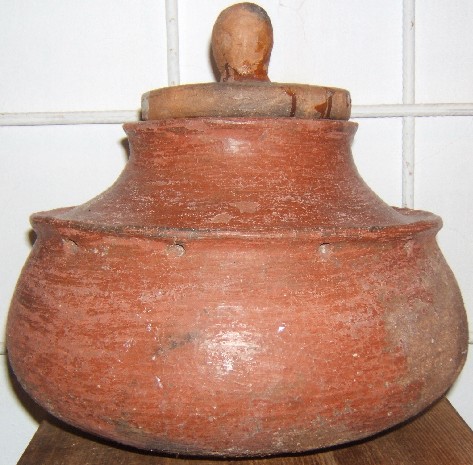In a beautiful landscape of terraces in the highlands of La Gomera, dotted with palm trees and typical houses of mediocrity, with stone facades and covered with tiles, is the hamlet of El Cercado, in the municipality of Vallehermoso.
In this picturesque village, a small number of potters keep alive pre-Hispanic ancentral techniques once practiced by the aborigines of the island.
This traditional work, practically extinguished, is carried out exclusively by women, known as "Loceras de El Cercado" who transmit their good work from generation to generation, from mothers to daughters.
Craft, like any art, evolves and adapts to the times, but in this place, time seems to have stopped. The expert hands of the locals, work the mud as did their ancestors from pre-conquest times, using traditional techniques such as mashing with sticks, loving or tanning and kneading by hand.
The pieces are raised without the help of lathes or molds and the clay they collect in the area is kneaded, directly with water. The utensils used are reduced to a stone of callao (quiet of sea) and a piece of brass of the arc of a barrel.
The pieces elaborated by hand, are unique pieces and of daily use, such as pots, basins, braziers, jugs, bowls, cups ... being the most exclusive piece "the carabucho" used in the milking of goats and that consists of two wings.
The mud, here called "masapé", requires a lot of dedication being a hard work that requires almost a month of intense work, counting from the preparation, preparation of the clay, kneading, scraping, smoothing, almagre, baking and different drying phases. For drying, before putting the pieces in the oven, they smoke in the kitchen of the house-workshop of the loceras, for several days.
The process of elaboration begins once the mud is obtained, this one, is crushed well with a stone, is cleaned and soaked in water. Also used is sand that is also crushed and looms well before mixing with the mud. It is kneaded with the hands until forms some balls on which will begin to make the pieces. Once made, they are allowed to rest at night, then scrape and polish with water and a stone of callao. When the piece is smooth, it can be painted with almagre (a sandy red-sienna soil) and re-smoothed and then allowed to dry and finally carried to the oven.

If you travel to La Gomera, do not forget to visit in the square of El Cercado, the Interpretation Center of Las Loceras, a small museum dedicated to the traditional pottery of the area, where you can witness directly how the locals work the mud And you can take a tour of the history of this craft specialty through an exhibition of panels and pieces.


